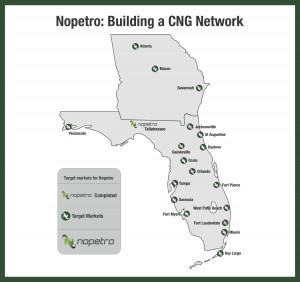BY BRUCE RITCHIE
FLORIDAENVIRONMENTS.COM
Sometimes covering the environment and energy in Florida seems like the land of big promises and broken dreams.
But I’ve decided that just comes with the beat.
Witness this week when James Scrivener, CEO of National Solar Power, updated the Gadsden County Chamber of Commerce on his plans to build 400 megawatts of solar arrays over 10 years.
 A year earlier on the steps of the historic Florida Capitol, Scrivener announced his company had chosen Gadsden among counties competing to build 400 megawatts of solar arrays over 10 years. It would be National Solar’s first project.
A year earlier on the steps of the historic Florida Capitol, Scrivener announced his company had chosen Gadsden among counties competing to build 400 megawatts of solar arrays over 10 years. It would be National Solar’s first project.
The headlines picked up on the promise of a $1.5-billion investment over 10 years and 400 hundred jobs in one of the poorest counties in the state.
But six months later, his company was warning that it would walk if it didn’t receive tax breaks from the county.
This week, Scrivener told the Gadsden County chamber that construction would start in late 2013, or perhaps early 2014.
He didn’t say that was two years behind schedule. And that didn’t make it into the newspaper headlines.
Turn back the clock to 2007.
Then-Gov. Charlie Crist welcomed Glenn Farris of Biomass Gas & Electric Co. to the Governor’s Mansion to announce plans to build two woody biomass electric-generating plants in North Florida.
Residents in Liberty County soon revolted against the company’s idea of putting a plant there. The company proposed building in Tallahassee but left in 2009 after some residents here protested as well.
The company announced in a huff that it was taking its jobs to industrial town of Port St. Joe, but it never happened. BG&E instead sold out to Rentech Inc., which announced in December 2011 that it was abandoning the project and two others that caused $58.7 million in losses.
The list goes on:
In 2009, Babcock Ranch developer Syd Kitson announced plans for a 75-megawatt solar power array that Florida Power & Light Co. said would be the largest in the world. In 2010, Babcock Ranch said it needed legislation to allow the project to move forward.
Adage LLC announced in 2009 it would build a biomass energy plant in Gretna in Gadsden County. But it didn’t. The company said in 2010 it would build in Hamilton County instead. Then it dropped those plans.
I could list more. Are you getting the idea?
Fast forward back to this week:
Nopetro holds a grand opening ceremony for its compressed natural gas refueling station.
Ah, a real project — for once.
But that wasn’t enough. The company announced its plans for a network of 19 compressed natural gas vehicle refueling stations in Florida and another three in Georgia over the next three years. (If it can work out local “partnerships” — aka refueling contracts).
Also this week, Tesla Motors announced its plans to build a network of electric vehicle recharging stations across the nation.
Consider the fact that last week, Tesla CEO Elon Musk told CBS News that he wants to use his SpaceX company to settle Mars. He called it a “fixer-upper of a planet.”
Sure, there are setbacks in business. I realize developing alternative forms of energy is going to take time. I don’t fault Scrivener or anyone else for that.
What I have a problem with is journalists just reporting what the public relations people feed them without asking the tough questions and reporting the answers, or non-answers.
What exactly is being announced? What is required to build in terms of tax breaks or grants? What is the timeline? What could delay that timeline?
Is the company really announcing plans, or is it announcing goals — or just dreams? We can’t be afraid to point out the distinction — but it is difficult. And reporters should follow up, six months, a year or even three years later. Was it ever built — and if not, why not?
These are tough stories to report and they take time. I’ve only scratched the surface in my own reporting and could do much better as I juggle other daily stories.
Media organizations need to not just buy into the hype — but will they change?
I hope so. But I suspect we’ll be breathing air on Mars before that happens.
(Story and photos copyrighted by Bruce Ritchie and Floridaenvironments.com. Do not copy, forward or redistribute without permission, which can be obtained from brucebritchie@gmail.com .)
